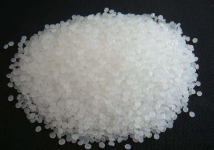read: 790 time:2025-07-07 16:54:26 from:化易天下
Pyridine is a six-membered aromatic heterocycle containing a nitrogen atom in its ring structure. The unique electronic configuration of pyridine makes it a subject of interest in various chemical reactions, particularly in nucleophilic substitution. A key question that often arises is: why pyridine undergoes nucleophilic substitution at the 2 position? To understand this, we need to delve into the structural and electronic properties of pyridine, the mechanism of nucleophilic substitution, and the factors that favor the 2-position substitution over others.
Pyridine has a molecular structure similar to benzene, with one of the carbon atoms replaced by a nitrogen atom. This nitrogen atom is sp2 hybridized and has a lone pair of electrons, which is not involved in the aromatic π-electron system of the ring. The presence of nitrogen causes a significant alteration in the electron density distribution of the pyridine ring. Nitrogen, being more electronegative than carbon, withdraws electron density from the ring, particularly affecting the 2 (ortho) and 4 (para) positions.
The electron deficiency at the 2 and 4 positions makes them more susceptible to nucleophilic attack. This is the first step to understanding why pyridine undergoes nucleophilic substitution at the 2 position.
To explain why pyridine undergoes nucleophilic substitution at the 2 position, it is important to consider the mechanism by which this substitution occurs. Pyridine typically undergoes a two-step nucleophilic aromatic substitution (SNAr) mechanism. The first step is the attack of the nucleophile on the electron-deficient carbon in the ring, forming a negatively charged intermediate known as the Meisenheimer complex.
The intermediate formed when a nucleophile attacks the 2 position of pyridine is relatively stable. This is because the negative charge generated on the ring can be delocalized onto the nitrogen atom, which is highly electronegative and can stabilize the charge effectively. The 2 position, being adjacent to the nitrogen, benefits the most from this stabilization, explaining why nucleophilic attack is favored at this site.
The key to understanding why pyridine undergoes nucleophilic substitution at the 2 position lies in the stabilization of the intermediate complex formed during the reaction. When a nucleophile attacks at the 2 position, the resulting negative charge is delocalized over the nitrogen atom and the carbon atoms in the ring, particularly those at the 2, 3, and 4 positions. The electronegative nitrogen atom helps to stabilize this negative charge through resonance, making the formation of the intermediate more favorable.
In contrast, if the nucleophile were to attack the 3 position, the negative charge cannot be delocalized directly onto the nitrogen atom, making this intermediate less stable and the reaction less favorable. Therefore, the preference for the 2 position is primarily due to the ability of the nitrogen to stabilize the intermediate.
From a kinetic perspective, the nucleophilic substitution at the 2 position is generally faster because the initial attack is more energetically favorable due to the proximity to the electron-withdrawing nitrogen atom. Thermodynamically, the overall reaction is also favored due to the stabilization of the transition state and the intermediate complex, both of which contribute to a lower activation energy for the reaction at the 2 position compared to other positions on the pyridine ring.
In summary, the answer to why pyridine undergoes nucleophilic substitution at the 2 position lies in the electron-deficient nature of pyridine, the stabilization of the intermediate complex through resonance, and both kinetic and thermodynamic factors. The unique electronic structure of pyridine, influenced by the nitrogen atom, creates a scenario where the 2 position is more favorable for nucleophilic attack compared to other positions on the ring. Understanding these factors provides valuable insight into the chemical behavior of pyridine and its applications in various fields, including pharmaceuticals, agrochemicals, and materials science.
By knowing why pyridine undergoes nucleophilic substitution at the 2 position, chemists can better predict reaction outcomes and design more efficient synthetic pathways, enhancing the utility of pyridine derivatives in diverse chemical processes.

Jincheng Petrochemical's 300000 ton polypropylene plant successfully trial production, 2024 polypropylene market analysis

The ABS market remains sluggish, what is the future direction?

Market differentiation of bisphenol A intensifies: prices rise in East China, while prices generally decline in other regions

The production method and process flow of silicone acrylic lotion, and what are the common raw materials